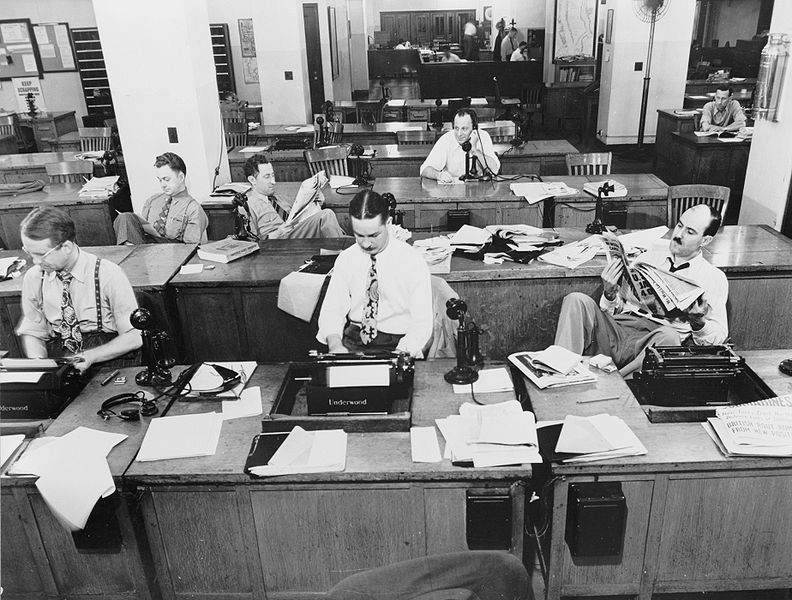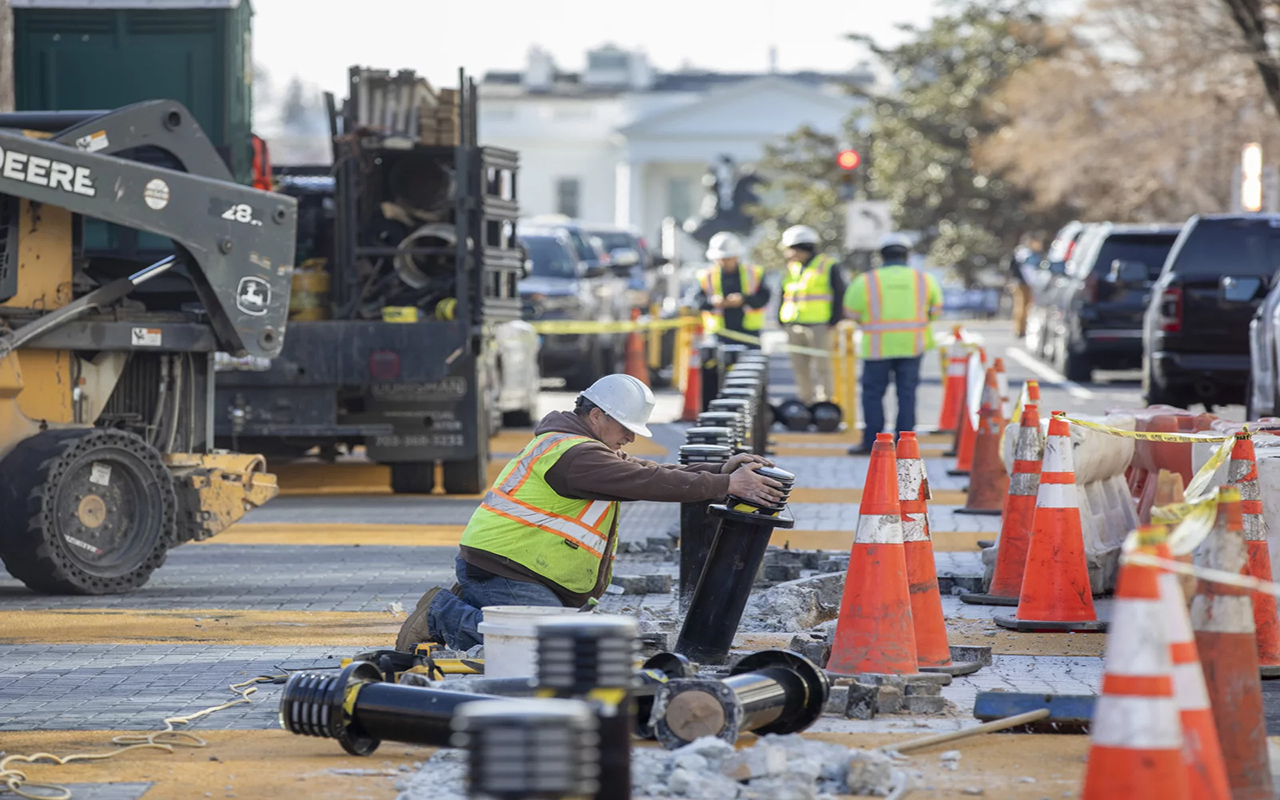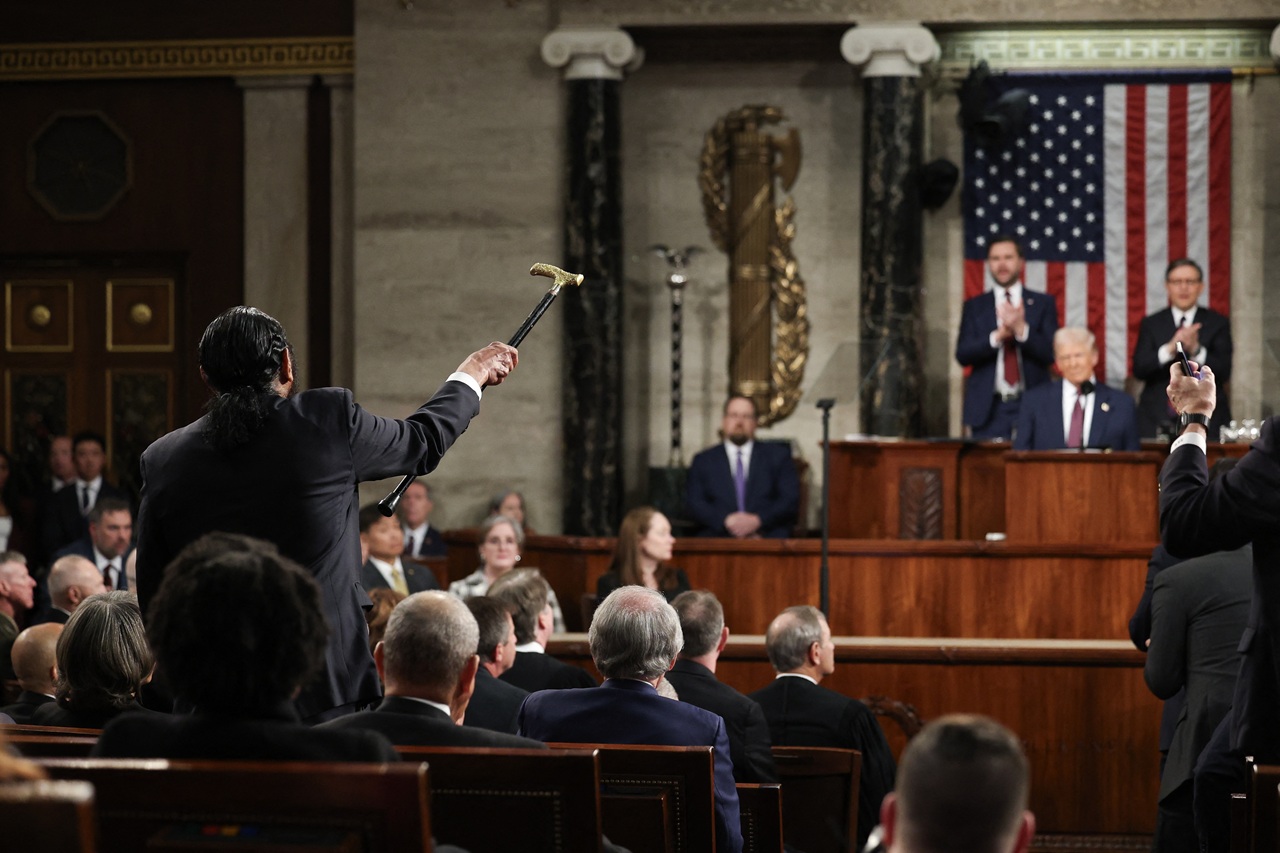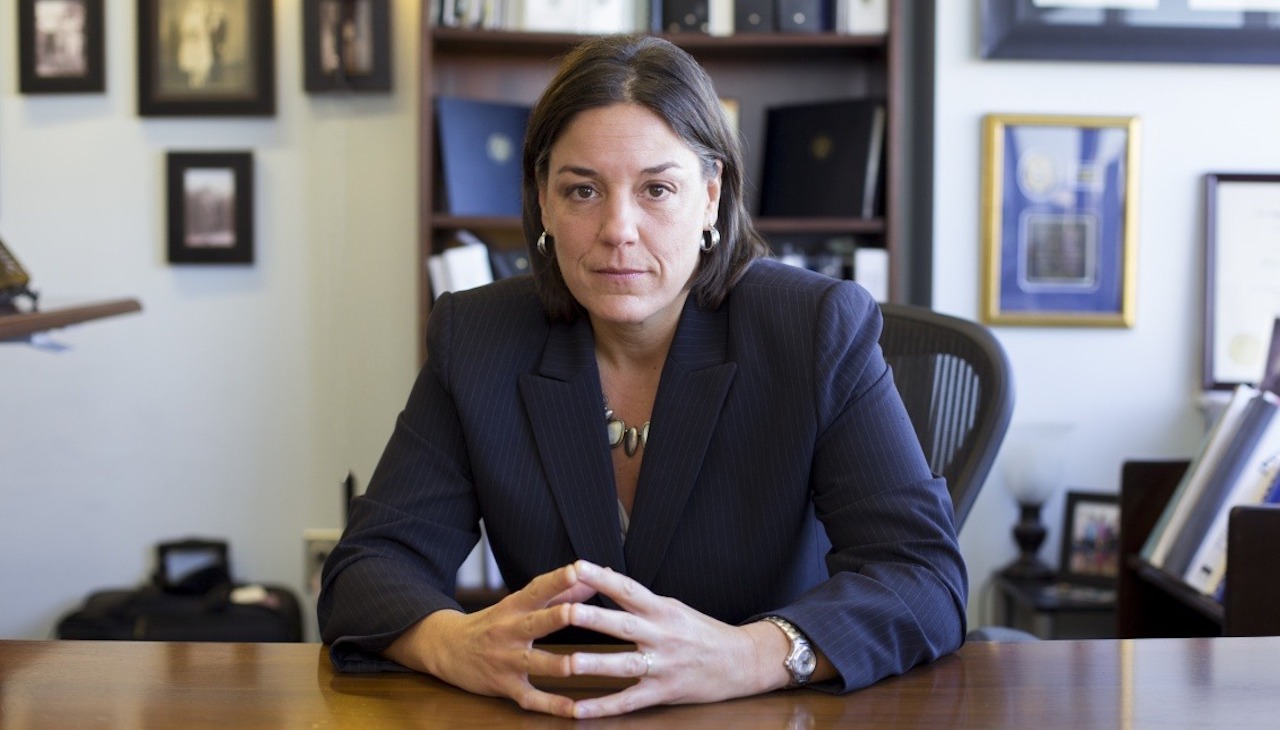
How can we achieve real diversity in our city’s newsrooms?
AL DÍA talked to experts in diversity in journalism to understand how Philadelphia - and the country as a whole - can do a better job of ensuring that our…
Our city grows younger and more diverse each year. According to the PEW Research Center, millennials make up the largest age group of Philadelphia’s population. African-Americans compose just over 43 percent of the city’s population. Meanwhile, the Latino population is increasing rapidly. While twenty years ago Latinos made up just 5 percent of Philadelphia, today that number has more than doubled to 12 percent.
Of course, these transformations in Philadelphia mirror broader population trends happening across the United States. Millennials are the most racially diverse generation in our nation’s history. Statistics by the Brookings Institute project that the nation will become “minority white” by 2045 and the U.S. Census Bureau expects that more than half of the nation’s children will be part of a minority race or ethnic group by 2020.
As the U.S. continues to grow more diverse, that diversity must be reflected in newsrooms across the country. It is acknowledged throughout the industry that when reading or hearing the news, it is essential that all races, ethnicities, and genders see themselves reflected in the stories they consume.
But the lack of inclusion still persists, with studies showing large gaps in representations in terms of both gender and race in newsrooms. What is the direction forward?
“Lack of diversity in news organizations results in a lack of nuance and perspective that ends up disenfranchising people in the coverage that is produced,” Martin G. Reynolds told us. Reynolds is the Co-Executive Director of the Maynard Institute, a non-profit organization dedicated to helping the news media accurately portray all segments of society, particularly those often overlooked or misrepresented, such as communities of color.

This lack of inclusion in U.S. newsrooms is not a new issue of concern. In 1967, after a series of riots took place in Latino and African American neighborhoods of Los Angeles, Chicago, Newark, and Detroit, President Lyndon B. Johnson sought to understand why the violence had occurred. He commissioned a report asking three questions: “What happened? Why did it happen? What can be done to prevent it from happening again and again?”
After seven months of investigation, the Report of the National Advisory Commission on Civil Disorders, more commonly known as the Kerner Report, was published. The Kerner Report cited inadequate housing, educational, and economic opportunities for minorities combined with poor policing and social services as embedded forms of racial discrimination and the root causes of the riots.
The Kerner Report also criticized mainstream media. It explained how the industry’s lack of inclusivity made it complicit in the racial discrimination. There simply were no people of color in newsrooms to articulate the tensions and strife of life in America’s urban minority communities.
In 1977, a decade after the Kerner Report was released, Robert C. Maynard (alongside nine other black, Latino, and white journalists) established the Institute for Journalism Education (now the Maynard Institute). At that point in time only four percent of journalists in newsrooms nationwide were people of color. The non-profit organization dedicated itself to providing training opportunities to journalists of color and made accurate representation of minorities in mainstream news media a moral imperative.
In 1978, Robert Maynard and his wife, Nancy Hicks Maynard, helped convince the American Society of News Editors (ASNE) to adopt the goal of having minority employment in U.S. daily newspapers equal the percentage of minorities nationally by the year 2000. It was a bold initiative for its time. ASNE implemented a survey that year to begin measuring how the gender and race demographics of news organizations match up against those of the communities they cover.
Forty years later, the promise of newsroom diversity has yet to be fulfilled. ASNE continues to run their annual study, but have pushed their deadline back to 2025. This year, a historically low number of newsrooms agreed to participate in the survey. Only 293 of the 1,700 media organizations asked to take part in the industry census replied.
According to the data that was collected, people of color comprise 22.6 percent of employees reported by all newsrooms - a rise from 16.5 percent in 2017. Among daily newspapers, approximately 22.2 percent of employees are racial minorities. Women make up 41.7 percent of newsroom employees overall. Of all newsroom managers, 19 percent were minorities and 41.8 percent were women. The journalism industry also reported a net loss of 505 jobs.
Leaders at ASNE, such as Executive Director Teri Hayt, emphasize the importance of survey participation, as accurate statistics require participation by all. Hayt does acknowledge that no singular reason can be blamed for the low number of responses to this year’s survey. The fast pace of change in the industry, rapid turnover in news media staffing, and even questions that were added to the survey by ASNE all contributed to the low response rate, Hayt said.
She also stresses that the goal of this survey is not to simply “name and shame” those newsrooms that do lack diversity or did not participate. ASNE’s goal is to establish a baseline of statistics the industry can use to collectively assess its weaknesses and make advancements.
Nonetheless, what remains glaringly apparent in the data is that American news media continues to be dominated by white males.
The structural faults contributing to this lack of diversity in U.S. newsrooms today remain inextricably linked to systemic issues of race and socio-economic privilege that existed in the 1960s. Veteran journalists of color and female journalists have iterated (and reiterated) these realities countless times over the past five decades or more, and have made it clear: Change starts at the top.
“You cannot have a successful approach to diversity in your workforce if it isn’t coming from the very highest levels of your company,” Hayt told us.
The Maynard Institute has stressed the importance of this very same notion since its inception.
Robert C. Maynard himself was the son of two immigrant parents from Barbados. He dropped out of Brooklyn High School at the age of sixteen to pursue writing. This meant leaving home to work in York, Pennsylvania for the York Gazette & Daily in 1961. Five years later, Maynard’s work earned him a Nieman Fellowship to attend Harvard University. He then joined the editorial staff of the Washington Post.
In 1979, Maynard became editor of The Oakland Tribune. He purchased the paper two years later, becoming the first African American to own a major metropolitan newspaper in the United States. Under Maynard’s guidance, the struggling Oakland Tribune was transformed into a Pulitzer Prize winning publication by 1990.
The opportunities that enabled Robert C. Maynard to become the news industry leader that he did are not always guaranteed to young journalists of color. There are numerous barriers of entry which hold back many of these change-making journalists from entering the field. The cost of a degree in journalism is one. Unpaid internship programs, a common prerequisite for entrance into the profession, are another. These channels favor candidates from wealthier backgrounds, many of whom also have the benefit of insider network connections.
“The reality is that bringing people of color into a news organization isn’t enough,” Martin G. Reynolds, in his capacity as Co-Director at Maynard Institute, told us, “because often times these folks are less senior, they are not in positions to actually change the infrastructure or strategy of an organization. And so, if you’re talking about inclusion, inclusion means that who they are is viewed as an asset in what they bring so that their perspectives are included in the approach to journalism, the stories that are selected, the sources that are picked, and the angles that are taken.”
Even when journalists of color do acquire the adequate educational foundation they need to begin their career in the field, job openings are scarce. In an unprecedented era of financial decline for the legacy newspaper industry, hiring opportunities are limited and drastic workforce cuts have become a norm. Young journalists of colors are often the first to feel the repercussions of these events.
As Michael Days, Philadelphia Media Network Vice President of Diversity and Inclusion explains, “When the economy tanked, then readers started to move away from print; revenue dropped dramatically. Thousands of journalists have lost their jobs. Every industry, including our own, is now re-focusing on diversity. It needs to work this time. I don’t think we get another opportunity.”
RELATED CONTENT
Teri Hayt also acknowledges this point, to which she adds, “There cannot be a step back because people have been laid off or the business model no longer works. At the core of it, if you don’t have a diverse workforce, you don’t have a workforce that’s really telling the stories of your community.”
Properly addressing such an urgent matter under the challenging economic circumstances of this era for news organizations demands commitment from all stakeholders.
“This is about culture,” says Hayt. ”This is about changing your newsroom culture and you cannot do that unless your ownership, your publishers, and your editors are all on the same page.”
It also comes down to the mindfulness of each individual working in the newsroom. Inclusion is not simply a matter of checking off all the right boxes; it’s a conscious and collaborative effort.
“To understand diversity you can’t just look at the number of people of different cultures and backgrounds, ethnicity and languages working in a newsroom,” said WHYY journalist and producer Elisabeth Perez-Luna.
“You have to be surrounded by people who understand the diversity of experiences, the historic context of the places and stories you plan to explore. It’s a combination of things,” she noted. “A newsroom has to be as complex as the people and the issues you cover.”
Martin G. Reynolds agrees, and advocates the Maynard Institute’s Fault Lines Framework as one mechanism through which individuals of all backgrounds can be trained to be more aware.
“We all see the world based on how we align across five fault lines of race, class, gender, generation, and geography. And so how you align across those five fault lines as a person really impacts how you see the world. It is why two people can look at the very same thing and come away with two very different perceptions of what they just saw,” he said.
This is the lens through which the Maynard Institute trains journalists to view their work. It’s an approach that Maynard developed himself. “So some of the steps that you can take to address the lack of diversity is to train the journalists you have to understand their fault lines and blind spots,” Reynolds continued.
This aligns with Michael Days’ teamwork approach at the Philadelphia Inquirer, “We have to be very intentional in making certain that everything we do is mindful that we serve a very diverse region,” he said.
For Days, it’s about asking the right questions: “Are our contacts and sources diverse regardless of the topic? Do we show up in some communities only when there is a shooting, or worse?”
“If we do, that’s a significant problem. People need to see you in good times and bad. Ordinary people doing extraordinary things always make for good stories,” Days said.
Inclusion in the newsroom establishes a reciprocal trust between news organizations and their communities. Diversity in the newsroom means credibility and now, perhaps more than ever before, news organizations today are under pressure to demonstrate that virtue.
In these testing times for the industry, “Trustworthiness and credibility is vital,” Martin G. Reynolds ensures, “and so in order for news organizations to begin to rebuild trust, they need to make diversity a strategic priority.”
Hayt echoed this need for representation in the newsroom in order to produce quality journalism.
“You have to have diversity in mind because that goes straight to you being a credible source of news,” she remarked. “Are you telling the truth of your community? If you don’t have a workforce that can tell those stories? Probably not.”









LEAVE A COMMENT: